In order to run a successful business, you need to know:
Where you are in relation to your goals
How long it will take you to get to the finish line
How decisions might impact downstream events.
It’s fair to say that these questions are the bare minimum, yet many teams aren’t able to find these answers. Essentially, their top decision-makers are flying blind. This idea is represented in Forbes’ 2023 Annual Data And Analytics Global Leadership Survey, which found that only 59.5% of surveyed leaders are driving business innovation with data.
Without a single source of truth and the ability to find the answers that you need, decision-makers are left relying on gut feelings that can lead organizations down the wrong path. But your business doesn’t have to work in the dark.
Modern business intelligence (BI) shines a light on past and current performance, calling attention to bottlenecks and unearthing risks while highlighting opportunities to delight customers, innovate products and services, and boost revenue growth. But what exactly is business intelligence, and how does it work?
Table of contents:
- What is business intelligence?
- Benefits of business intelligence
- Business intelligence vs business analytics
- How does business intelligence work?
- Business intelligence examples
- Business intelligence industry use cases
- Business intelligence best practices
- What to look for in a BI platform
- Top business intelligence tools
- The future of business intelligence
Business intelligence is the use of technology to analyze and transform data into actionable insights. An organization’s data comes from various internal and external sources—increasingly this includes both proprietary and third-party sources. The sheer volume of this exponentially growing data makes it difficult to interpret, causing businesses to struggle to uncover patterns, trends, or insights within their data. But with the help of business intelligence tools, organizations get a holistic picture of their performance一for the company, departments, internal teams, and individual initiatives.
Business intelligence software also presents data in more digestible formats like charts, heat maps, trendlines, and status reports. These data visualizations highlight real-time inefficiencies and opportunities.
As you might expect, there are many benefits to using business intelligence. At its core, business intelligence empowers companies to:
Improve the quality of products and services
Optimize business processes
Increase organizational insights and opportunities
Boost operational efficiency
Drive stronger business strategies
Increase customer satisfaction
Make informed business decisions
Identify industry and market trends
People often use business intelligence and data analytics interchangeably. Here’s the breakdown:
Data analytics is the process of preparing large quantities of data for analysis (e.g.data mining, data cleaning, data transformation, data governance) and is typically performed by a data analyst.
Business intelligence communicates what is happening now and what happened in the past so business users can make data-driven decisions in the moment.
Business analytics is the process of applying BI in a business context to understand how decisions are impacting your organization. Business analysts or analytics engineers typically perform this work in partnership with domain experts to deliver data-driven solutions for specific business challenges.
BI begins with the collection of data from various internal and external sources, including databases, spreadsheets, enterprise systems like ERP or CRM, social media, and customer feedback. The data, whether structured or unstructured, is then integrated into a centralized repository and stored in a data warehouse. For example, a retail company might gather sales data from its point-of-sale systems, inventory data from its warehouse management system, and customer data from its CRM system. This integrated data is analyzed using BI tools to uncover insights such as purchasing patterns, product performance, and customer demographics. These insights are visualized through dashboards and reports, enabling stakeholders to make informed decisions about inventory management, marketing strategies, and customer engagement initiatives.
Furthermore, to efficiently handle the vast amounts of data collected, businesses have increasingly turned to modern data management techniques. This often involves leveraging advanced technologies and cloud-based solutions, collectively known as the modern data stack. Here’s how you can embrace the modern data stack to enhance your business intelligence capabilities.
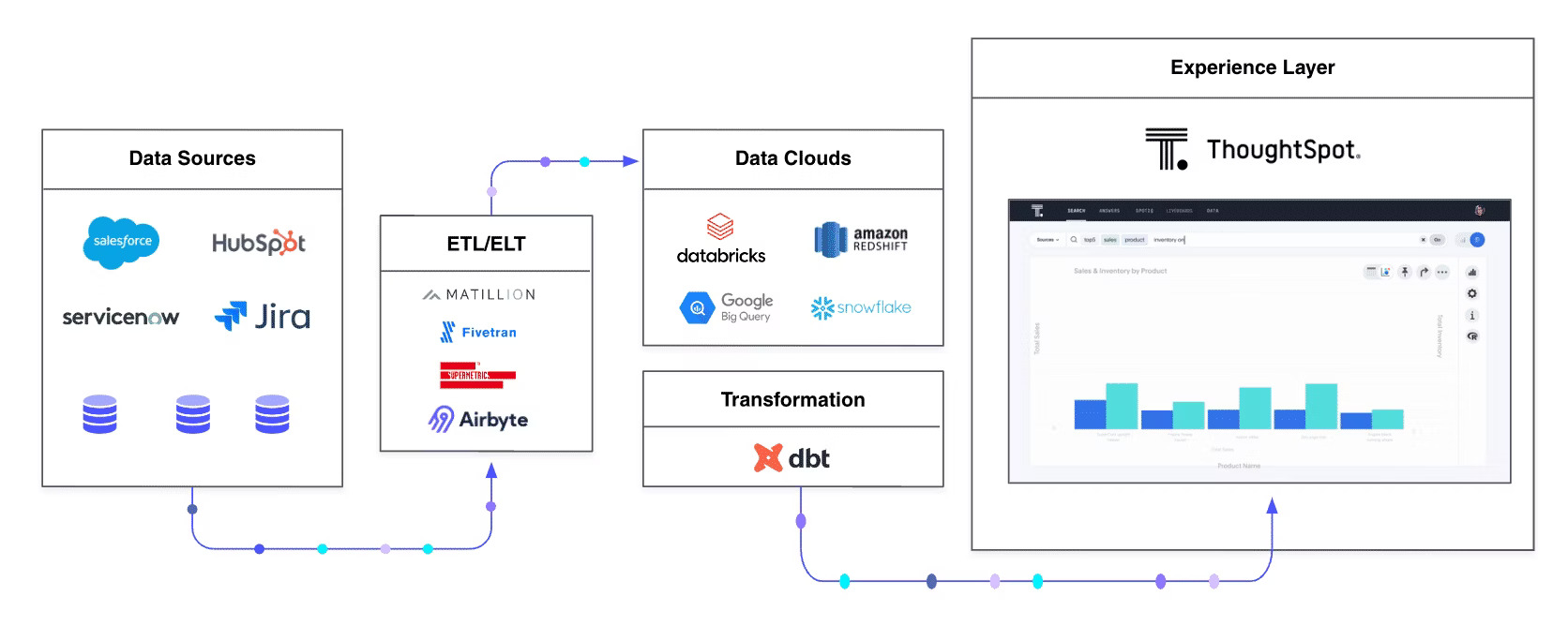
1. Data collection from various sources:
Gather data from diverse sources such as Salesforce, ServiceNow, and HubSpot. These sources generate vast amounts of raw, unorganized data that you need to decipher.
2. Extraction and loading of data:
To make sense of this data, it needs to be extracted from its sources. Tools like Matillion, Airbyte, Fivetran, and Supermetrics play a crucial role here. They organize the data and prepare it for storage in a cloud data warehouse.
3. Storage in a cloud data warehouse:
The organized data finds its home in a cloud data warehouse, sometimes referred to as a cloud data platform. This warehouse serves as the centralized repository for the data.
4. Data transformation:
Transformation tools, such as dbt, operate within the cloud data warehouse. They facilitate the transformation of data, preparing it for analysis. This transformation layer can occur at different stages of the data pipeline: extract, load, transform (ELT) or extract, transform, load (ETL).
5. Analytics and insights generation:
With the data organized and transformed, business users can interact with it to derive insights. Data visualization tools like ThoughtSpot play a crucial role here. They enable users to explore and analyze the data visually, facilitating informed decision-making.
Business intelligence can be tough to conceptualize in the abstract, so let’s take a look some business intelligence examples:
Business intelligence and marketing
Marketing teams often leverage business intelligence to understand how campaigns are performing. For example, let’s say your marketing team is launching a weekly newsletter.
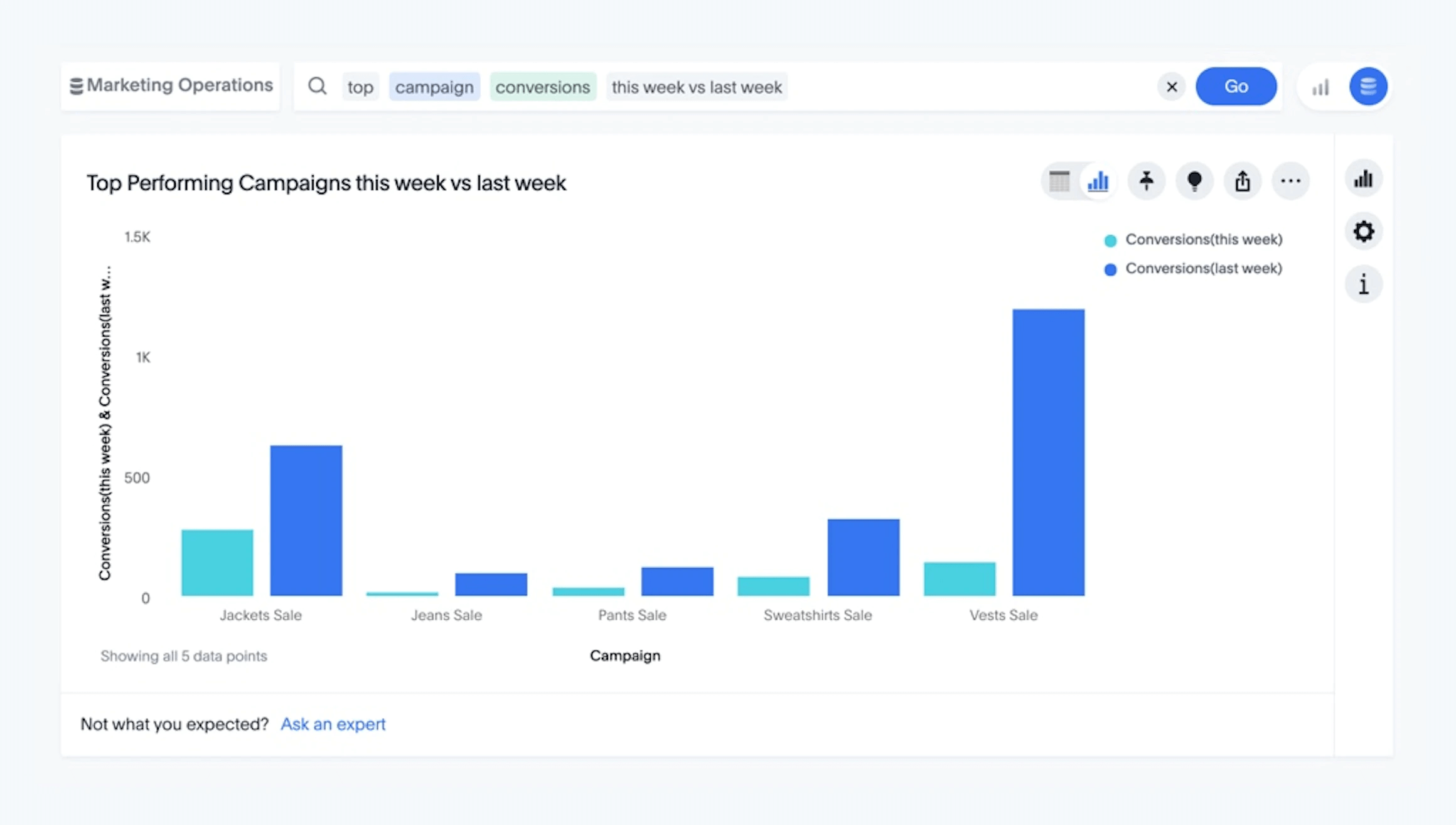
Before the first newsletter goes out, they’ll set goals for open, response, click, bounce, and unsubscribe rates. Business intelligence allows your marketing team to track these metrics in real time and experiment with different strategies to improve their KPIs week over week. They can also use these metrics in coordination with other sales data to calculate the ROI of their efforts. All these can be tracked using a Liveboard–a modern dashboard software that’s real-time, interactive, and created for sharing, embedding, and data storytelling.
Ready to witness the power of Liveboards in action? Join Katie Dunn, our Senior Demand Manager, as she unveils how we leverage ThoughtSpot internally to create dynamic Liveboards that drive our marketing strategies.
Business intelligence and sales
Sales teams use business intelligence, too. It gives sales leadership insight into the number of deals in the pipeline, number of booked meetings, time spent in each opportunity stage, conversion rates, and more. They rely on dedicated sales dashboards that provide a real-time view of key metrics and performance indicators.
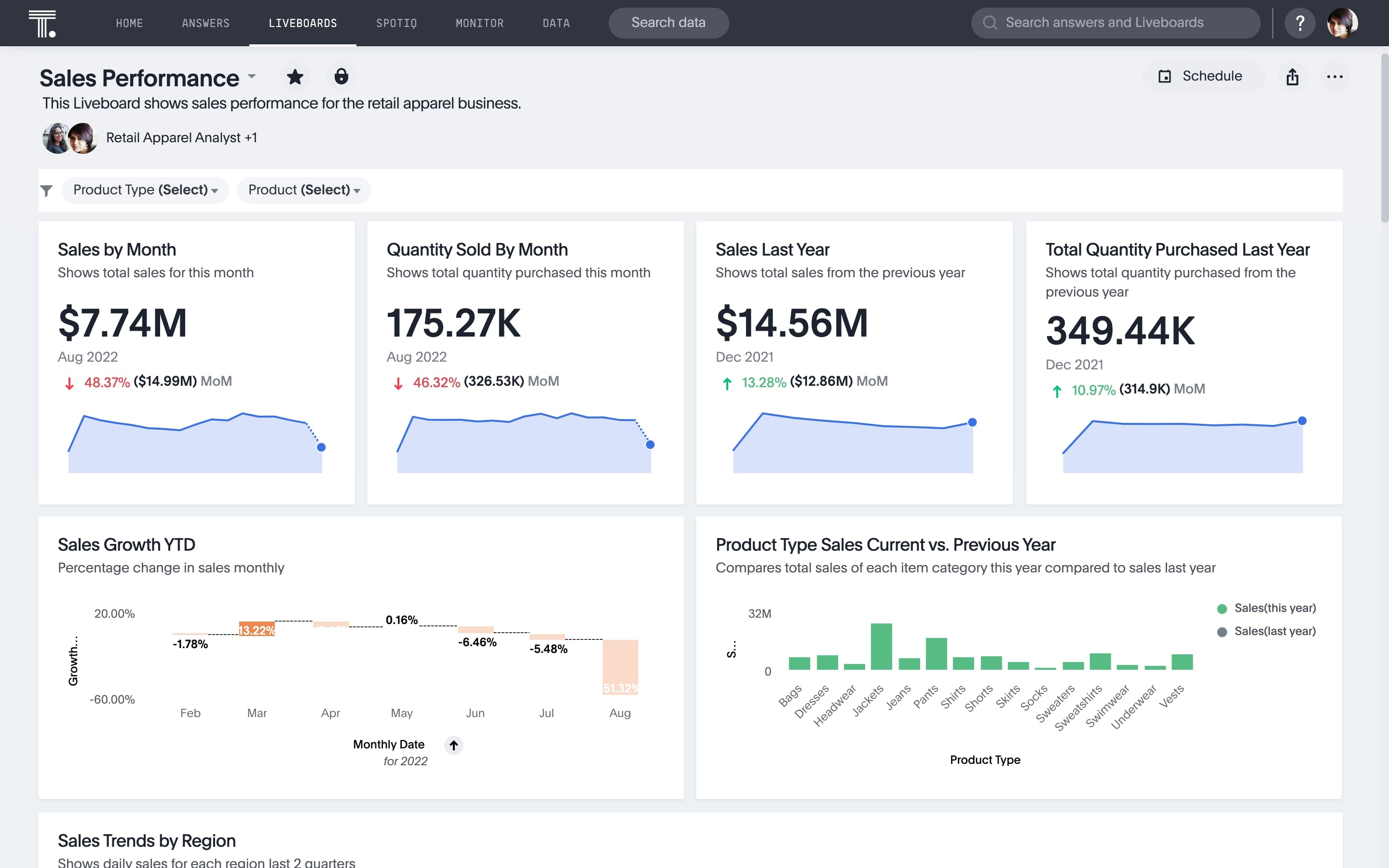
BI tools can also help sales managers compare KPIs to other quarters, enabling them to double down on areas where they're over-performing, or course correct if their numbers aren’t trending positively midway through a quarter. Sales managers might also use BI to understand which swim lanes offer the highest close rate and which market segment is generating the most profit. BI also plays an important role when making sales projections for the overall organization. Needless to say, if you work in sales, BI is a critical component to your success.
For instance, Fabuwood's executives sought access to real-time sales data. They were looking for a user-friendly BI tool to sort data by product type, location, customer, and sales representative. Today, the Sales Liveboard stands as the central hub of information for the entire Fabuwood organization. It ensures that real-time sales data is accessible to everyone via ThoughtSpot.
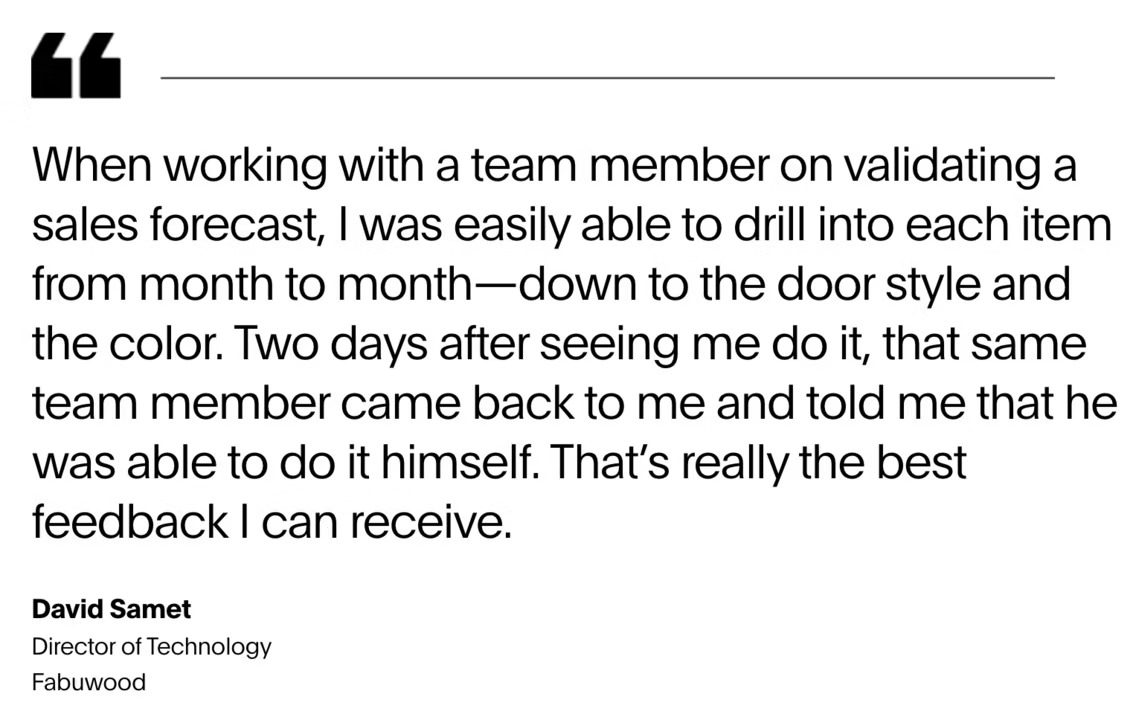
Business intelligence and operations
However, BI isn’t just for go-to-market teams. Operations teams use business intelligence to oversee how efficiently (or not-so-efficiently) processes run.
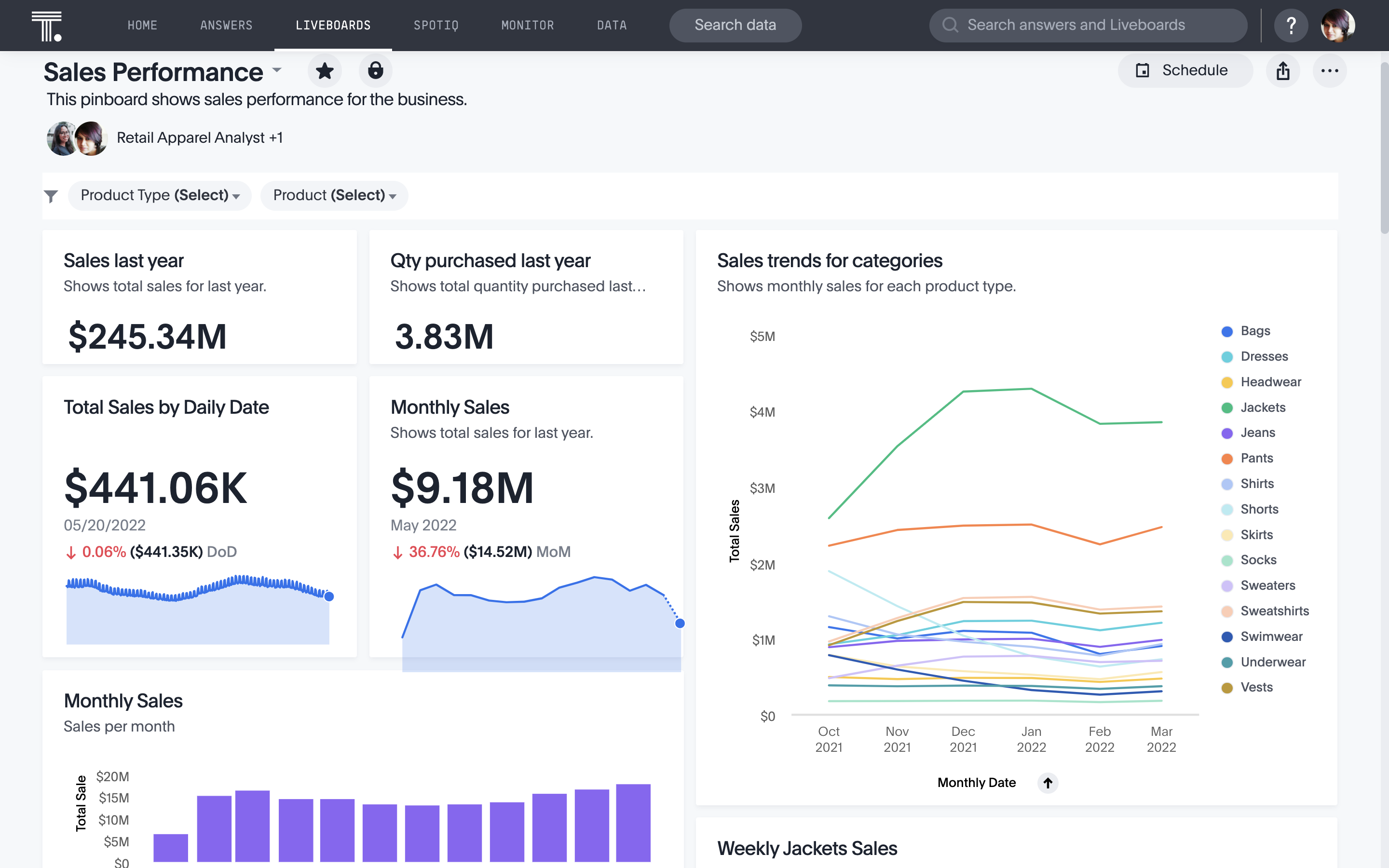
They might use BI tools to forecast demand and then closely track cycle time, incident response time, and downtime rates to ensure they meet production deadlines. If any of these metrics look off during the project, they can investigate and make adjustments before it’s too late.
Of course, if you’ve ever worked in operations, you know a majority of the job is about managing data. BI tools can simplify these lengthy data-gathering processes, so you spend less time hunting for data, and more time optimizing operations.
Learn more about other useful business intelligence examples
Business intelligence is the underlying foundation of a solid data analytics strategy, no matter what industry your company serves. Let’s look at a few industry examples.
BI in Finance
BI in finance empowers organizations with real-time insights into critical aspects such as deposits, transactions, and loan data, enabling swift decision-making. Through meticulous data analysis, these insights pave the way for personalized customer experiences, uncover upsell opportunities, and drive operational enhancements. Moreover, the integration of BI tools facilitates the creation of comprehensive financial dashboards, offering a consolidated view of key metrics and trends, thereby streamlining monitoring and strategizing processes.
We do have an enormous amount of data…you could almost think of it as a burden, but it really isn’t. The magic behind that is stitching all the data together…pulling in your customer behavior, where you’ve been, and at that moment you’re calling in, being able to synthesis all of those events to predict why you are calling and be ready with information to help you solve your problem.
BI in healthcare
In healthcare, empowering all stakeholders to make data-driven decisions is crucial for enhancing patient care. Healthcare analytics employs BI tools to convert raw data into actionable insights, improving operational efficiency and decision-making. Integration and preprocessing of data from diverse sources unveil hidden insights, enabling the discovery of improvement opportunities.
Healthcare and the clinical development is driven by science and data. That’s how we get insights. That’s how we derive information.
💡Read how business intelligence is changing healthcare in 2024
BI in retail
Using BI as a baseline can help retailers optimize inventory planning, create better products, and improve the customer experience. For example, by leveraging business intelligence tools during the pandemic, Canadian Tire successfully managed inventory despite store closures, achieving notable sales growth through informed decision-making.
Identify requirements: Before creating a BI dashboard, it's crucial to understand the purpose and objectives. Ask questions such as why the dashboard is needed, what problem it aims to solve, and what data is required to make decisions.
Target your audience: Design separate dashboards tailored to specific audiences, considering their priorities and the decisions they need to make. Different stakeholders may require different information, so customize the dashboard content accordingly.
Emphasize the most important information: Use the inverted pyramid concept from journalism to highlight the most critical insights at the beginning of the dashboard. Place the most significant data at the top-left, as this is the most viewed spot, followed by supporting details and background information.
Use the right visualizations for your data: Choose visualizations that effectively communicate insights and avoid unnecessary complexity. Consider the type of information you want to convey (relationship, comparison, composition, or distribution) and select visualizations that best represent that information. It's essential to steer clear of bad data visualization practices.
Provide context: Contextualize the data by including historical comparisons, target benchmarks, or milestone dates. This helps users understand trends, performance against goals, and areas for improvement.
Add interactivity: Interactive features can significantly boost engagement and usability by enabling users to interact with the data more dynamically. For instance, users can filter the data to focus on specific criteria or utilize interactive elements for drilling down into specific aspects of the dataset.
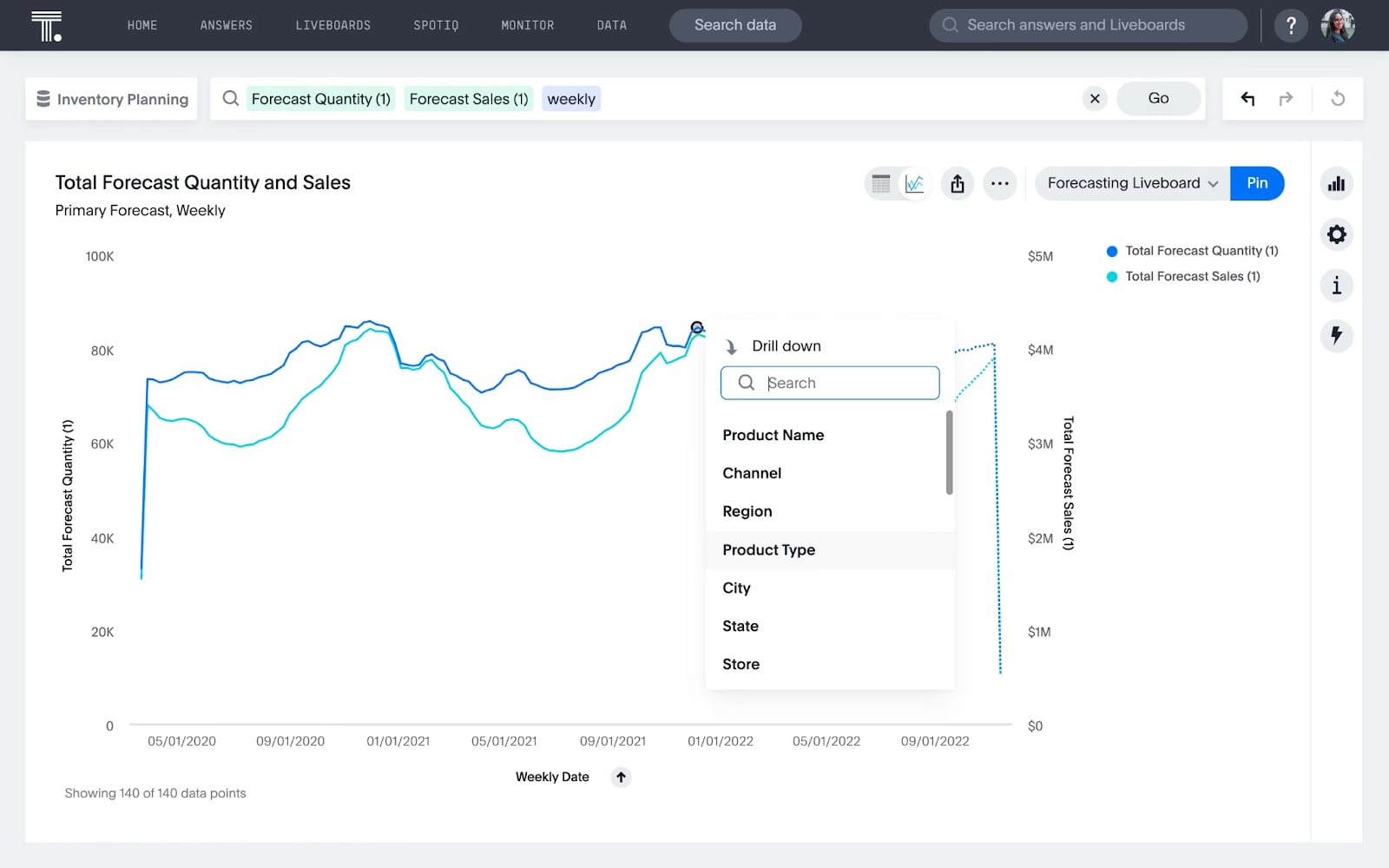
Prioritize readability: Avoid common design mistakes that can make the dashboard hard to read, such as cluttering the interface, neglecting whitespace, and using too many colors. Keep the dashboard clean, organized, and visually appealing to improve readability.
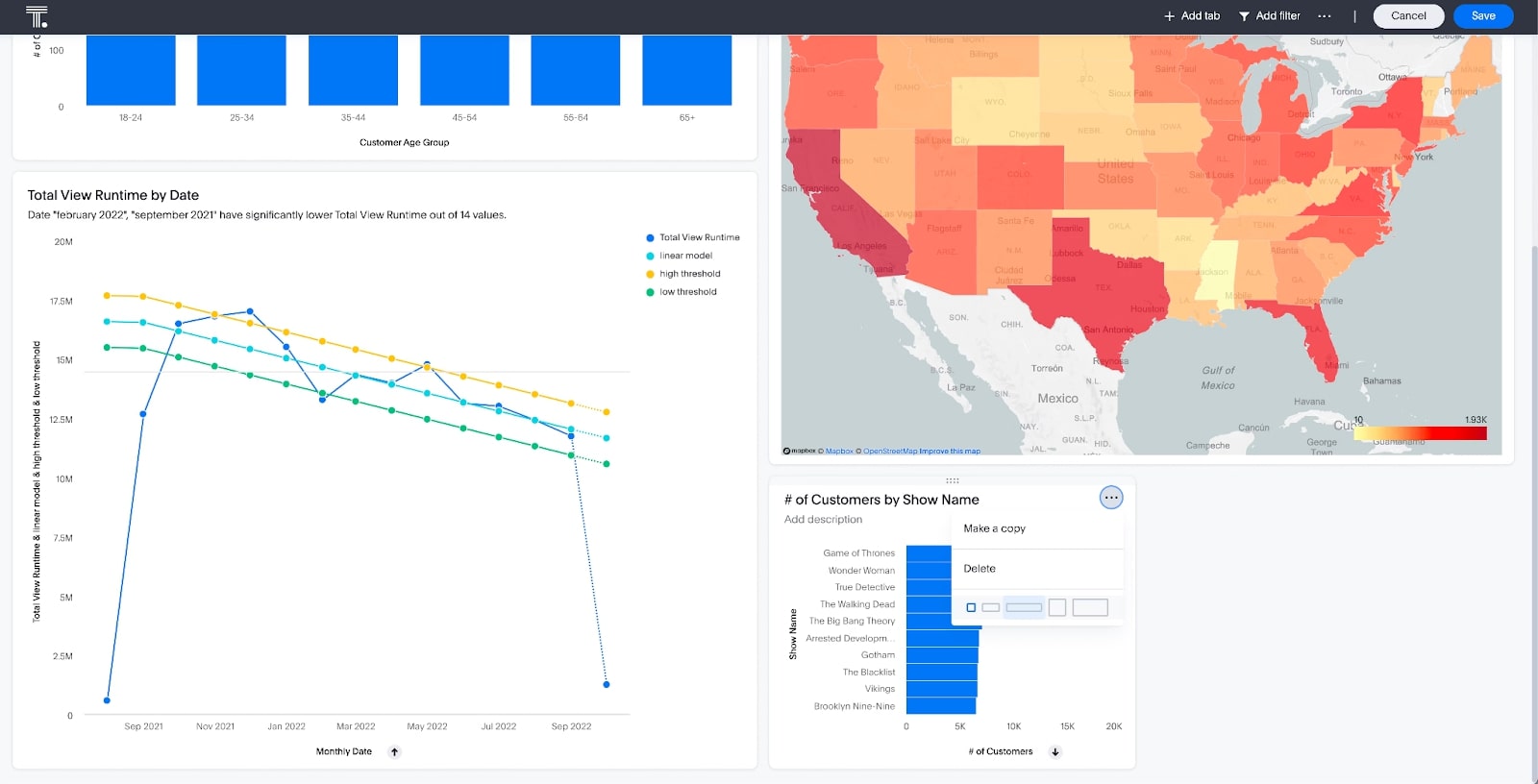
It’s important to find a best-in-class tool to support your BI strategy as not all BI tools are built the same. You should start by analyzing your needs and internal use cases. The key is finding a tool that will work for your organization.
Once you’ve established your organization’s needs, here are 7 components to keep in mind as you evaluate a potential BI platform:
Self-service experience
It’s important that decision makers across the business have direct access to insights. What might be self-service for your business analyst may not be self-service for your C-Suite executives. Aim for a platform that is user-friendly, intuitive, and collaborative for everyone in your organization so that any user can create personalized, actionable insights at the point of impact.
Compatibility
You’ll want to ensure that your new BI tool is compatible with the other tools in your modern data stack. Your data should easily sync with your tool, allowing you to view and analyze your data in real time. Some BI tools struggle to do this at scale.
Scalability
Speaking of scale, it’s vital to invest in a tool that is going to grow with your business. You don’t want to spend time and energy setting up and exposing your users to one business intelligence tool only to outgrow it as your business and data needs change. Look for a tool that can handle large amounts of data without lagging and sacrificing the user experience.
Governance and security
Your data is an invaluable asset. It’s vital that you keep it in the right hands, while still making it accessible to those who need it. Look for a business intelligence tool that allows you to efficiently adhere to your organizational and compliance standards with secure and flexible access controls.
Ease of use
If you’re a seasoned professional in any role, you’ve probably experienced a data tool that created more work than insights. This defeats the purpose of investing in business intelligence. If your tool isn’t easy—dare we say fun—to use, your decision-makers won’t use it to their advantage. Old habits die hard—It’s easy to go back to localized spreadsheets with outdated data, or worse, rely on your gut instinct to make decisions.
Augmented analytics
Another key component to evaluate is how well your business intelligence tool surfaces relevant insights. By investing in an augmented analytics solution, your team will be able to uncover smarter insights automatically. Even if they aren’t sure what they should be searching for.
Ability to operationalize
Your business intelligence solution should also be operational, meaning it should embed into your existing workflows and tools. If you can push key insights into Slack or email, your team is much more likely to act on them.
1. ThoughtSpot
Let's get straight to the point: ThoughtSpot is our preferred business intelligence tool, and we're a tad biased, but with good reason. ThoughtSpot's intuitive, search-based method for data analysis enables you to look for insights using natural language.
With ThoughtSpot's self-service analytics capabilities, any business user, regardless of their technical expertise, is empowered to explore data, unlock valuable insights, and bring data into their decision-making process. That’s why companies like Accern, Snowflake, and HP all explore their business data on ThoughtSpot.
Core features:
With Liveboards, you can create interactive dashboards and visualizations to represent your data in a valuable way.
ThoughtSpot Sage empowers all users to effortlessly ask and answer queries from their business data. Our natural language search feature is as user-friendly as your preferred search engine.
SpotIQ uses AI-assisted analytics to uncover hidden insights for enhanced decision-making.
You can share insights, reports, and dashboards with your team and collaborate on data analysis projects. With ThoughtSpot’s note tiles, you can provide important directions for how to read or use a specific visualization.
Ready to get started? Experience the potential of self-service analytics with a free trial of ThoughtSpot.
2. Mode
Next is Mode, a specialized tool designed for professionals well-versed in handling data. Mode's suite of tools for data analysis and business intelligence streamlines the process for analysts to gather, interpret, and present data in a format accessible to business users, facilitating informed, data-driven decision-making.
Mode has assisted several companies like Twitch, Greenhouse, Shopify, and many more to leverage data effectively. Its array of functionalities for data exploration, reporting, and collaborative work makes it a popular choice for data teams, analysts, and data-driven professionals. With Mode, you can build data models, connect to diverse data sources, schedule reports, and perform advanced analytics using Python, R, and SQL.
Core features:
Get answers to essential questions with standalone reports. Mode's ad hoc analysis tools provide the flexibility you need to get impactful data for informed decision-making.
Create interactive reports and dashboards effortlessly, without the need for coding, saving valuable time.
Conduct advanced statistical and predictive analyses alongside simple charting options.
Try Mode today and transform your data analysis journey!
3. Power BI
Created by Microsoft, Power BI is a tool for data visualization and business intelligence. It allows users to transform raw data into insights and dynamic reports. It is used in data visualization, reporting, and analytics across various industries. Power BI is particularly popular among organizations rooted in the Microsoft ecosystem. While the tool offers an intuitive interface, grasping Power BI's full potential can be challenging, as it requires a strong analytical background.
Core features:
Create data visualizations, including charts, graphs, maps, and tables using a drag-and-drop interface.
Power Query, part of Power BI, helps clean, shape, and transform data, including tasks like combining tables and adding calculated columns.
Share reports and collaborate by leaving comments on data points.
🔍Check out 9 best business intelligence tools to consider in 2024
As more organizations realize the value of their data and lean into BI technology, it’s important to choose a solution that’s built for the future—a partner that will help you dominate the decade of data. That’s where ThoughSpot can help.
With our intuitive, search-based UI and pre-built SpotApps for your favorite business tools, ThoughtSpot’s AI-Powered Analytics capabilities seamlessly fit into every user’s workflow. And with robust AI capabilities, our customers aren’t just creating, consuming, and sharing insights一they’re finding otherwise hidden trends and anomalies that have the potential to make or break their business.
ThoughSpot empowers all business users to answer questions with data, discover business-critical insights, and accelerate action. See for yourself, request a free demo of ThoughtSpot today.








